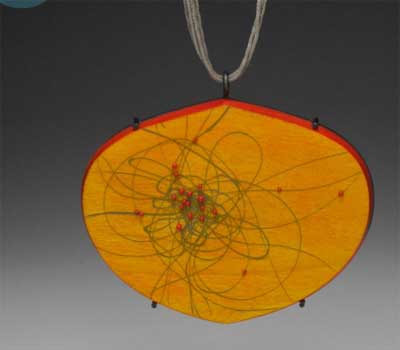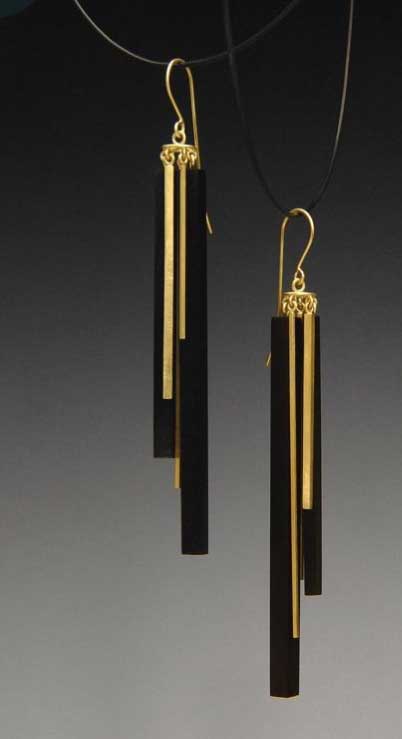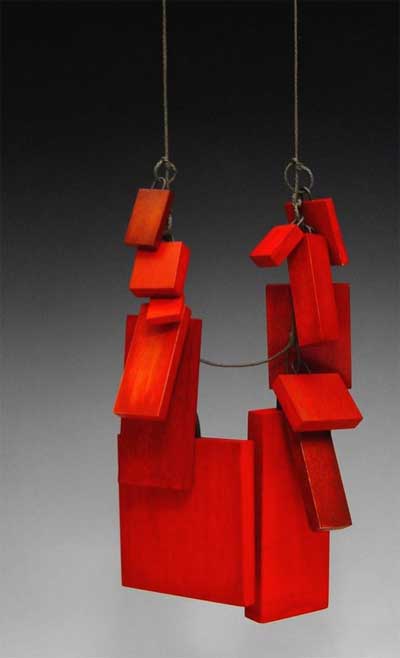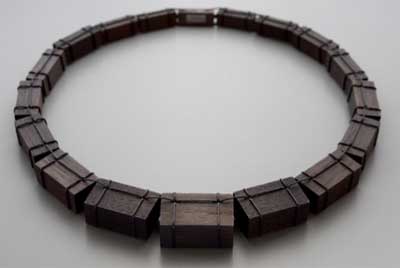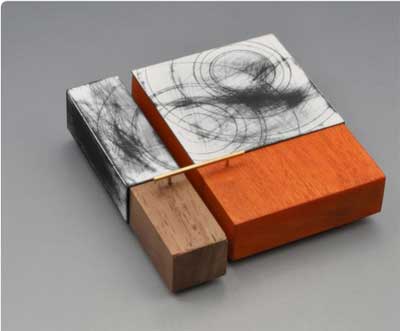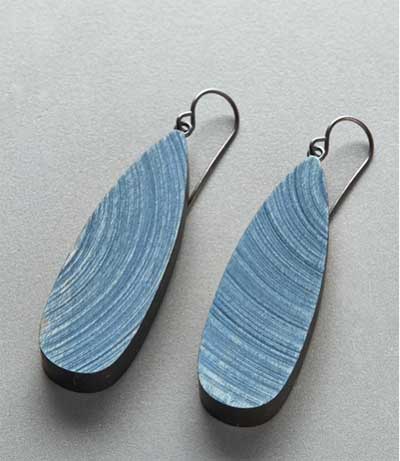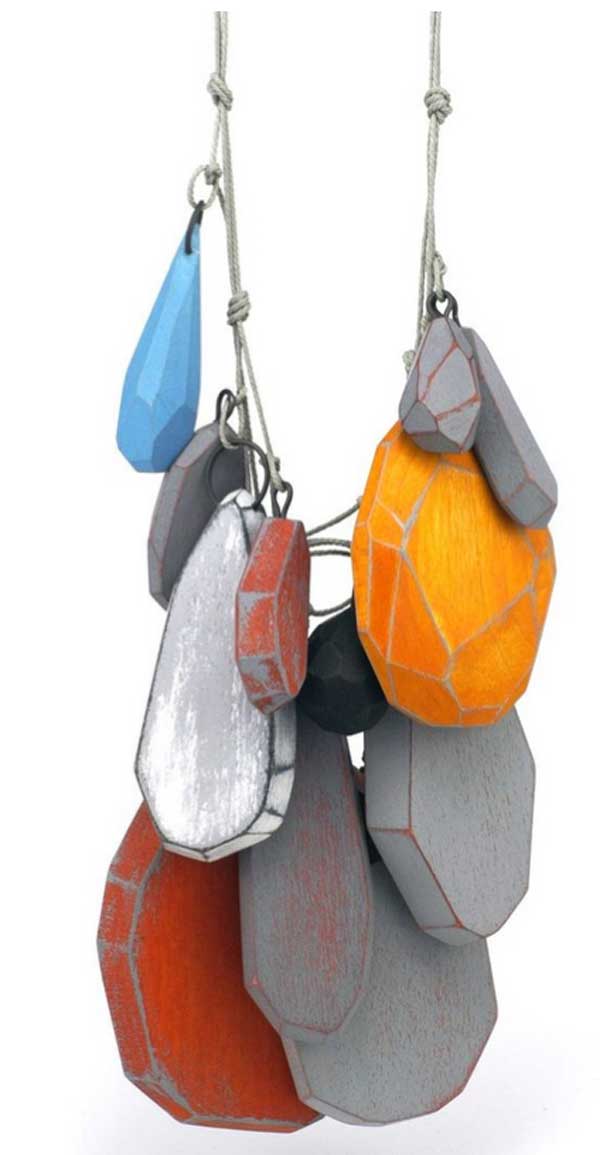
Although Julia Turner has been making things “for as long as I can remember,” it wasn’t until she was exposed to some of her art classes at the University of Wisconsin that she realized how many options were available.
Specifically, Julia, who had started out focusing her studies on linguistics and language, eventually obtained undergraduate and graduate degrees in metalworking. Along the way, she did study some woodworking, as it related to metal.
Julia’s now a jeweler and, over time, she has begun incorporating more wood into her work. “With metal, even if you do a hollow form, at a certain point, it just gets too heavy” for some uses, she said. Plus, wood provides her with more options for colors, without being limited to certain enamels or patinas.
That is, the wood provides those options when used appropriately. That’s a lesson Julia said she’s had to learn. She might have an idea for a particular project, or a specific color that she wants to create with stain, but depending on the way the wood was cut or its grain pattern, sometimes “it just has other ideas,” she said. “I have learned to not be so arrogant, to say, ‘I’m gonna do this thing to this piece of wood and it’s gonna work.’”
She has gained a better understanding of wood as she’s worked with it and imposes certain “rules” upon herself: using glue only on wood-to-wood joints and relying on mechanical fasteners for attaching different materials together, for instance. Some of those mechanical options might include pegs, tension fitting or prong fitting. Whichever method of joinery she uses, Julia said, she wants to understand its strength – whether it’s a glue joint or a rivet – before she sends her pieces out into the world.
She prefers to work with hardwoods – maple, white oak, sometimes walnut or cherry — partly because she can use the same tools on them as she uses for her metalwork. Also, she said, they take an edge better and give a much cleaner look when she stains them. “For my purposes, I usually want a really even grain. It’s mostly a vehicle for color or structure,” she said.
Recently, she’s been working with ebony that came from reclaimed piano keys. Julia also has a bunch of wood she acquired from the factory that was torn down where her studio now sits, and pieces from the scrap bins of other woodworkers in the San Francisco area. “Something they cut off a shelf is like a year’s worth of earrings to me,” she said. Having stashes of such wood around, Julia says she doesn’t feel “precious” about any of it, and feels more free to use it as a sketching medium.
As for using reclaimed wood – including the scraps from the remodeling of her own 1920s era house – “I love that it’s green-ish,” but that’s not her primary motivation. “I’m more opportunistic,” she said.
Whether she’s making a year’s worth of earrings, or other items, “it goes in waves,” Julia said. “At the moment, I seem to be doing more necklaces than anything else.” For a while, she focused on brooches – “tiny works of art” that allowed her to explore surface and pattern. Earrings and necklaces, on the other hand, require figuring out “how does this work if you put it on somebody’s ears? How does this work if you put it on somebody’s neck?”
“A lot of it is technical and mechanical. What am I interested in? What am I excited about?” Julia said.
Sometimes, she’s also influenced in project choices by her working environment – a group of like-minded artists who use space in the building of the Heath Ceramics company. A little over a year ago, Heath’s studio director Tung Chiang, “said, ‘Why don’t we do a collaboration and make bells? I’ll throw the ceramics if you make the guts of the bell.”
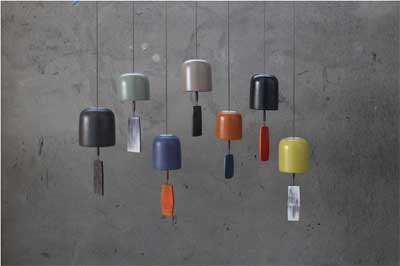
“It’s basically large wooden jewelry hanging inside of an upside-down ceramic mug,” Julia said. “When the wind catches the sail, it goes against the side of the bell and makes a tone.” But the project was a little more challenging than that simple explanation. “I had never made a musical instrument before, and I thought ‘oh, it’s not that hard,’” she said. “40 experiments later, I finally got a decent tone, and I thought ‘now I can actually start working on the part of this I was supposed to be working on.”
The eventual result of that collaboration was very satisfactory, Julia said, and she and Tung are now developing the project as a multiple production item – as simpler pieces.
In this new year, Julia has shows coming up that will feature her work both in conjunction with others (at the Smithsonian Craft Show in April) and as a solo artist (at a San Francisco gallery in March and April). She continues her experiments with materials, forms, techniques and more
